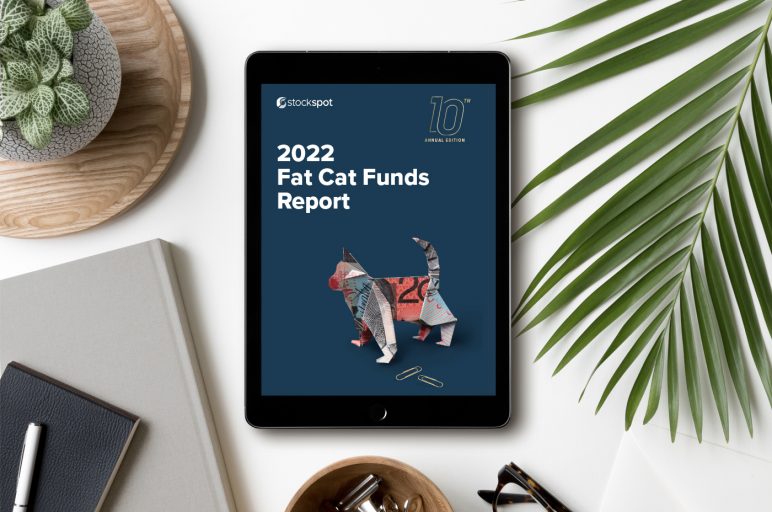Choosing the best super fund doesn’t need to be hard if you know what to look for. Learn how to compare and choose the best Australian superannuation fund.
Our eight years of research comparing super fund performance and fees suggests that Australians should focus on two factors when selecting a super fund:
- Find the right type of fund based on your capacity to take risk
- Choose the fund with the lowest fee.
With hundreds of superannuation funds and thousands of investment options, it can be confusing to know which super fund is right for you. This is why most Australians just stick with their employer’s default super fund. However, this is not always the best option and may even be a ‘Fat Cat Fund’.
Step 1: Find the right type of fund based on your capacity to take risk
A successful superannuation strategy starts with a mix of investments that’s suitable for your investment horizon and retirement goals.
The balance between risk and return potential should be the main consideration when working out the right mix of different investments in your super fund. The further away retirement is, the greater amount of risk you can take.
For most people, we suggest the below mix of investments provides the right balance to maximise long term returns, reduce short term risk, keep up with inflation and increase financial certainty towards retirement.
| AGE | 20S AND 30S | 40S AND 50S | 60+ |
| Investment mix | High growth /Growth | Growth /Balanced | Balanced /Moderate |
| Bonds and cash | 0% to 30% | 21% to 50% | 41% to 70% |
| Shares, property and other growth investments | 70% to 100% | 50% to 79% | 30% to 59% |
- The right superannuation strategy if you’re in you’re 20s and 30s
- The right superannuation strategy if you’re in your 40s and 50s
- The right superannuation strategy if you’re 60+
Get the right mix of growth and defensive assets
Growth assets (typically shares and property) have the potential for higher returns over the long-run, however they come with a higher risk of negative returns in the short run.
Defensive assets (bonds and cash) provide more steady returns and help to cushion periods of negative share market returns when share markets dip.
Markets will go up and down, so you need to accept some risk to reach your retirement goals. Our research shows that the type of assets chosen in your super fund drives the vast majority of returns. However, the actual individual shares chosen by a particular fund manager has minimal impact over time.
Academic research found that asset class choice drives 90% of return differences for investors. This means that active decisions that individual super fund managers make, such as market timing and stock picking, have relatively little impact on returns over long periods. These shouldn’t be significant considerations in your choice of fund.
The conversation around risk becomes increasingly vital when you begin transitioning to retirement and are thinking about drawing down on your superannuation balance.
Accumulation phase – what’s important
It’s at this point that you need to consider ‘sequencing risk’ – which is the risk that the order of when you receive returns may impact your retirement balance. This is why diversification and having appropriate asset allocation is crucial to preserving the amount of super you have accumulated over so many years.
Lifecycle strategies are becoming increasingly popular with super funds. These funds reduce your allocation to growth assets as you get older. However, many lifecycle funds have high fees so you need to be careful to select a low cost option.
The following table shows average returns of a simple portfolio of shares and bonds since 1900 to illustrate how risk (and returns) increase as you reduce bonds and cash in a portfolio.
We have also included the probability of a 10% or 20% loss to show how bonds cushion the impact of negative years in the share market and reduce the chance of significant losses.
On the other hand, the more cash and bonds you own, the lower your chance of achieving a 4% ‘real’ return (above inflation) over 10 years.
| FUND TYPE | MODERATE | BALANCED | GROWTH | HIGH GROWTH |
| Shares | 20% | 40% | 60% | 80% |
| Bonds | 80% | 60% | 40% | 20% |
| Historical returns since 1900 (p.a) | 5.7% | 6.4% | 7.1% | 7.7% |
| Chance of a 10% loss in any one year | 1% | 13% | 42% | 64% |
| Chance of a 20% loss in any one year | <1% | <1% | 3% | 15% |
| Chance of reaching a 4% real return over 10 years | 9% | 33% | 48% | 56% |
You should also look for a fund with good diversification across the assets it invests in, for instance by including Australian and international shares. This helps to reduce exposure to risks associated with a particular country, company, or market sector.
Some funds also offer exposure to other assets such as direct property, infrastructure, credit alternatives and venture capital.
Historically these assets can provide some diversification benefits. However unlike bonds they generally move in the same direction as shares so should be considered part of the growth asset group.
This is particularly important for people close to retirement who want to protect against the chance of significant losses in the short-term because they need cash-flow soon.
Step 2: Choose a super fund with low fees
Fees are the other most important factor when choosing a superannuation fund. You can’t control how markets perform, but you can control how much you pay for the management of your hard earned money.
The smaller that fee, the more money left over for you. Our research shows that lower cost super funds tend to outperform higher-cost alternatives across all categories.
Our research over the last eight years shows funds that charge less than 1% p.a. perform better in the long-term. There is a clear correlation between high fees and long-term underperformance in Superannuation.
Average returns over 5 years
| LOWER FEE FUNDS (UNDER 1% P.A.) | HIGHER FEE FUNDS (OVER 1% P.A.) | DIFFERENCE IN RETURNS | |
| High growth | 6.26% | 6.11% | +0.16% p.a. |
| Growth | 5.18% | 4.97% | +0.21% p.a. |
| Balanced | 3.62% | 3.21% | +0.41% p.a. |
| Moderate | 2.70% | 2.69% | +0.01% p.a. |
Index funds are the lowest cost option for investors. We found that indexing actually beats 90% of all super funds. Many superannuation funds hire so called “expert” investment consultants to pick a range of active fund managers to invest their clients’ retirement savings.
Unfortunately, these investment consultants and active fund managers take a nice big juicy fee from your super but rarely outperform a basic index which tracks the market. In fact, over the last five years less than 1 in 10 balanced super funds were able to beat a balanced index fund with similar risk (after fees and taxes).
Poor fund performance comes predominantly from active management fees as well as higher administration and operating expenses than necessary. The impact of high fees becomes more apparent with each passing year as funds find it more and more difficult to generate sufficient returns to make up for the drag of higher fees.
Low fees and the right mix of assets – the winning combination
Australians would benefit greatly if they simply looked for a super fund with suitable risk for their age, and the lowest possible fees. A simple, low-cost indexing strategy achieved top quartile returns in each category over the past five years.
This is consistent with recent research by UNSW Professor Dr Nicholas Morris who wrote “Management and Regulation of Pension Schemes: Australia – A Cautionary Tale” (2018). In his book Dr Morris shows that if the contributions made by super fund members between 1997 and 2016 had been invested in an index fund (with a suitable risk profile and typical expenses) they would now be about $700-800 billion dollars larger.
By following these two simple strategies, investors can be confident they’re choosing a super fund with the best chance of good returns.




